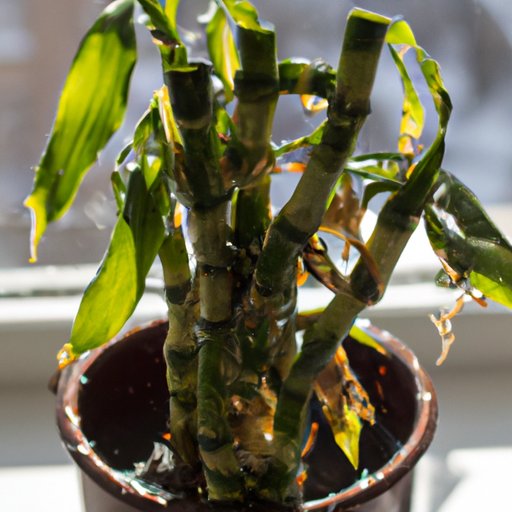Introduction
Bamboo plants are popular houseplants that can add a unique touch to any home. With their tall, slender stalks and lush green foliage, bamboo plants are an attractive addition to any décor. However, taking care of bamboo plants at home requires some knowledge and effort. Understanding the needs of the plant and following proper maintenance procedures will ensure that your bamboo plant stays healthy and beautiful for years to come.
Provide Plenty of Sunlight
Bamboo plants need plenty of sunlight to thrive. They should receive 6 hours of direct sunlight per day, preferably in the morning or late afternoon when the sun is not too hot. If your bamboo plant is indoors, make sure it’s getting enough light by placing it near a window that receives plenty of natural light. If you have no windows available, you can also use artificial lighting to provide the necessary light.
Water Regularly
Bamboo plants need to be watered regularly to stay healthy. How often you water your bamboo plant depends on the season and climate, but generally it should be watered every 1-2 weeks. Make sure the soil is moist, but not soggy. Over-watering can lead to root rot, while under-watering can cause the leaves to brown and wilt. Watch for signs of either and adjust your watering schedule accordingly.
Fertilize Monthly
Fertilizer is important for bamboo plants because it helps them grow strong and healthy. Use a fertilizer with an NPK ratio of 8-10-10 and apply it once a month. Avoid over-fertilizing, as this can lead to nutrient burn and damage the plant. To apply fertilizer, mix it into the soil around the base of the plant and water it in well.
Prune Regularly
Pruning is an important part of caring for bamboo plants. Pruning keeps the plant looking neat and encourages new growth. To prune, use sharp shears to cut off any dead or diseased stems, as well as any that are growing in an undesirable direction. Make sure to leave at least two nodes on the stem so that new shoots can form.
Repot Every Few Years
Repotting is essential for keeping your bamboo plant healthy. Repotting helps prevent the roots from becoming too crowded and allows the plant to take up more nutrients and water. Repot your bamboo plant every 2-3 years, using a pot that is only slightly larger than the previous one. When repotting, make sure to loosen the roots and remove any dead or damaged ones.
Control Pests
Bamboo plants are susceptible to pest infestations, so it’s important to keep an eye out for any signs of pests. Common pests include aphids, mealybugs, scale, and spider mites. If you spot any of these, treat the plant with an insecticidal soap or neem oil solution. Be sure to follow the instructions on the label carefully.
Monitor Humidity Levels
Bamboo plants prefer humid environments, so it’s important to monitor the humidity levels in your home. You can increase humidity levels by misting the leaves of the plant with a spray bottle, using a humidifier, or placing the pot on a tray of wet pebbles. This will help keep the plant healthy and happy.
Conclusion
Caring for bamboo plants can be rewarding and satisfying if done correctly. By providing plenty of sunlight, watering regularly, fertilizing monthly, pruning regularly, repotting every few years, controlling pests, and monitoring humidity levels, you can keep your bamboo plant healthy and beautiful for years to come.
(Note: Is this article not meeting your expectations? Do you have knowledge or insights to share? Unlock new opportunities and expand your reach by joining our authors team. Click Registration to join us and share your expertise with our readers.)
